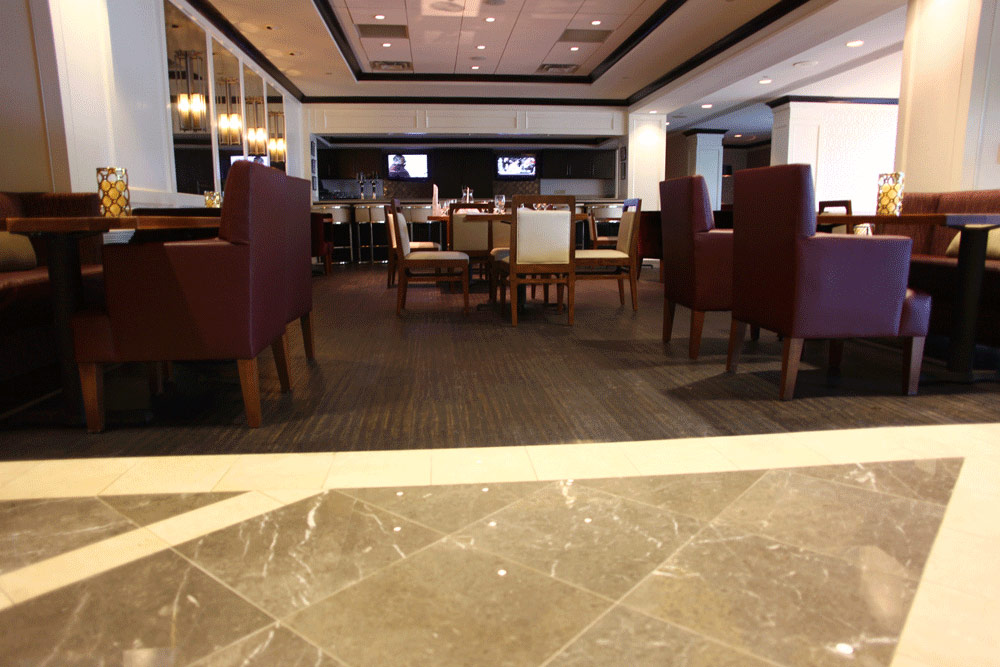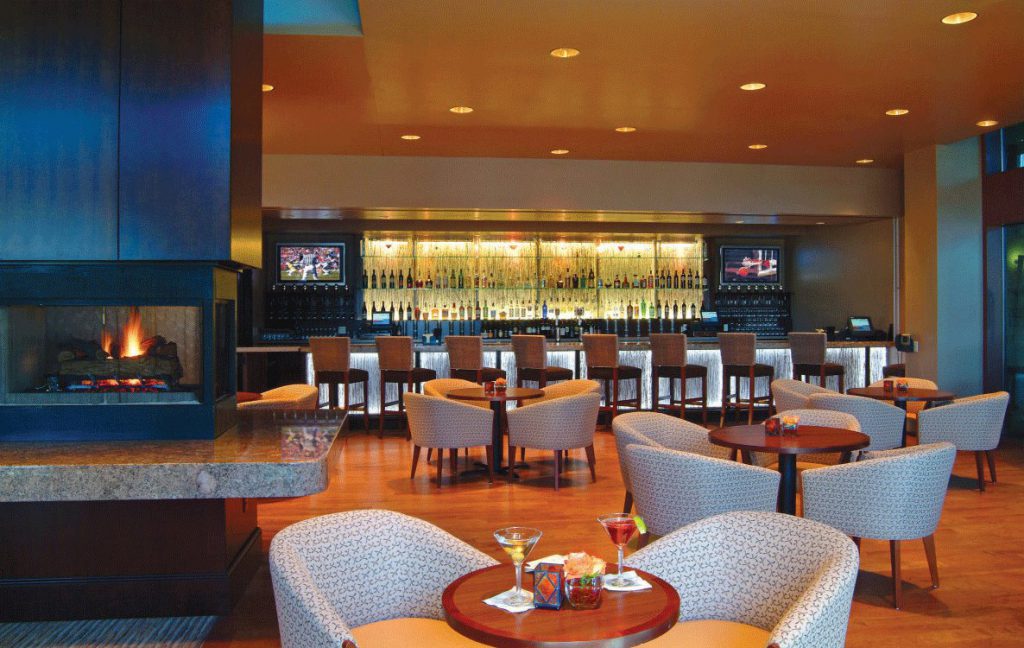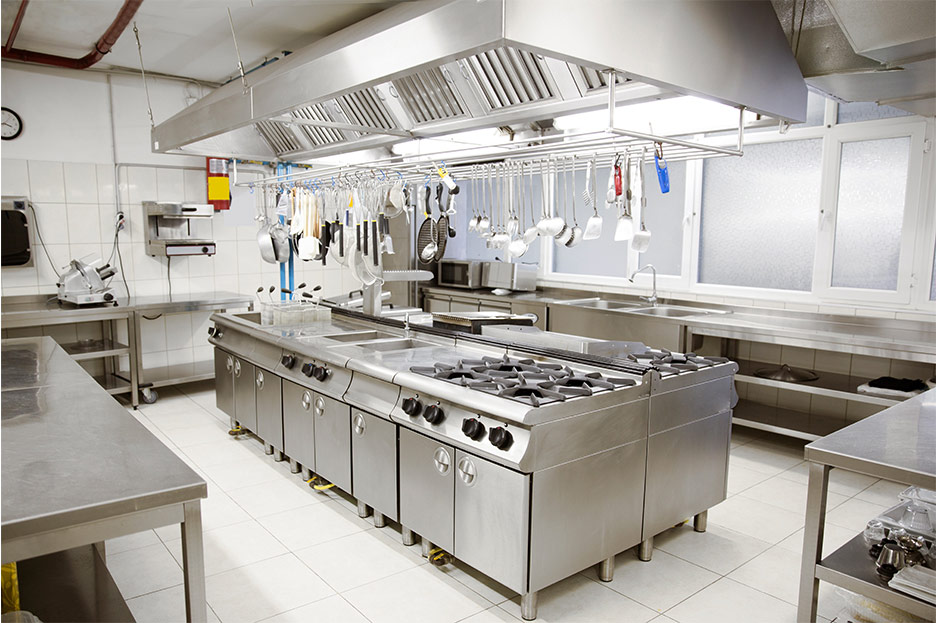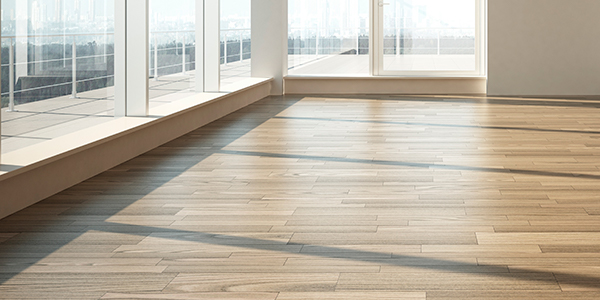When selecting restaurant flooring, there is much to consider. From cleanliness and comfort to safety and durability – the flooring within these environments faces many daily demands. With many significant areas, choosing the correct flooring option to meet the needs of each space is crucial to creating an appealing and comfortable space.
Waiting Area
Restaurant waiting areas are designed to give customers a place to relax while waiting to be seated. This area is usually also the first space the public will see when entering the restaurant. Therefore, waiting areas should be aesthetically pleasing – after all, first impressions can make all the difference for a business’ success, and a good first impression begins with appearance.

For this space, not only should the flooring be visually appealing, but it must also have durable, easy to maintain, and slip resistant characteristics. By incorporating a carpeted solution, your facility will reap from these benefits, as well as providing a warm, comfortable and ‘homely’ feel for your guests. When it comes to carpet, the two primary types you can choose from are broadloom (roll) carpets and carpet tiles. To better distinguish between the two, check out Broadloom vs. Carpet Tile: A Buyer’s Guide.
Dining Room
The dining room is where most of the gatherings take place within a restaurant. Whether the gathering is for a birthday, business meeting, or just a casual night out, customers should find these areas welcoming, yet comfortable. For a warm and inviting approach, try implementing wood or wood-like options.

Engineered hardwood, laminate, and wood plastic composite solutions give dining rooms the presence of genuine hardwood without a genuine hardwood price tag. These solutions are extremely durable and can stand up to stains, scratches, and moisture better than the wood it mimics.

Restaurant Kitchen
The kitchen is known as the heart of any restaurant. Usually kept out of the public’s eye, commercial kitchens desire just as much attention as any part of the restaurant regarding design. When it comes to choosing the correct flooring, durability and easy maintenance must be deciding factors. Incorporating ceramic tile or vinyl flooring can help achieve this goal.
For commercial kitchen settings, ceramic comes treated with a melted glass glaze that covers the surface to protect it from wear and tear, stains and water. Unglazed ceramic is porous and can’t withstand the rigors of a commercial kitchen. The glaze also allows ceramic to take on nearly any look, since manufacturers can create the glaze in nearly any design, including wood-grains and other natural patterns. If tiles break, you can replace them one at a time without shutting down the kitchen.

When it comes to vinyl, there are three options to choose from: vinyl composition tile (VCT), luxury vinyl tile (LVT) and sheet flooring. VCT is a mix of limestone, filler, thermoplastic binder and color pigments made in sheets then cut into tiles. It uses layers of polish to protect its surface but requires regular stripping, waxing, and re-coating, making it a poor option for commercial kitchen flooring.
LVT and sheet flooring, however, are much stronger options. Made predominantly of limestone-base material with some composites, they have a digital graphic film layer applied on the base layer and a sealed, outer wear layer on top. These vinyl floors are durable, resist heat, water, and stains, providing impressive design versatility. Manufacturers can print the digital graphic film layer in nearly any design, allowing LVT and sheet flooring to create any pattern and even be indistinguishable from natural materials, such as stone tile. Vinyl floors are by far the most cost-effective option for commercial kitchen flooring and may offer many other great advantages.

Restrooms
Often overlooked, restrooms within restaurants need careful consideration when it comes to choosing the correct flooring solution. Restroom flooring has a very specific set of properties that flooring solutions must be able to withstand. Properties must consist of durability, safety, easy maintenance and water resistance due to moist, humid environments. Because of this, standard concrete has become a very popular option. Concrete is a low-cost solution that often already exists as a subfloor. As long as it is properly sealed, concrete can fight moisture and only needs to be mopped with warm water upon routine cleaning.
About the author:
Mitchell Bryant is the communications specialist at Spectra Contract Flooring, the largest commercial flooring contractor in the U.S.





